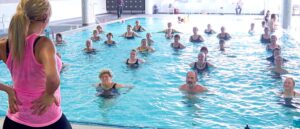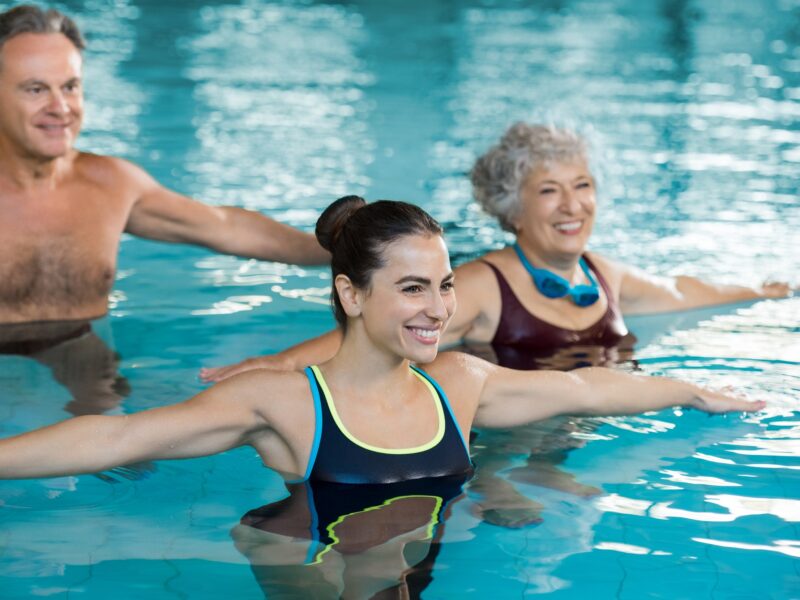Water aerobics, also known as aquatic exercise or aqua aerobics, is a form of exercise performed in a pool or aquatic environment. It combines the principles of aerobic exercise with the buoyancy and resistance provided by water.

Benefits of Water Aerobics
1. Buoyancy: The buoyancy of water reduces the impact on joints, making water aerobics a low-impact exercise. This is especially beneficial for individuals with arthritis, joint pain, or mobility issues, as it decreases the risk of injury while still providing an effective workout.
2. Resistance: Water provides natural resistance as you move through it. This resistance engages various muscle groups, helping to strengthen and tone muscles without the need for heavy weights or equipment. Resistance can be increased or decreased by adjusting your speed and the size of your movements.
3. Cardiovascular Benefits: Water aerobics is an excellent way to improve cardiovascular fitness. By performing exercises that raise your heart rate and increase your breathing rate in the water, you can improve your cardiovascular endurance over time.
4. Whole-Body Workout: Water aerobics engages multiple muscle groups simultaneously, including the legs, arms, core, and back. This provides a comprehensive full-body workout that can enhance overall strength and coordination.
5. Increased Range of Motion: The buoyancy of water allows for greater freedom of movement, making it easier to perform exercises that may be challenging on land. This can help improve flexibility and range of motion.
6. Cooling Effect: Exercising in water helps dissipate body heat, which can be particularly appealing in hot weather or for individuals who are sensitive to high temperatures.
7. Social Interaction: Many people enjoy the social aspect of water aerobics classes. Participating in group classes can be a fun way to meet new people and stay motivated to exercise regularly.
8. Varied Workouts: Water aerobics classes often incorporate a variety of exercises, including leg lifts, arm movements, kicks, and even dance-inspired routines. This variety keeps workouts interesting and prevents boredom.
9. Rehabilitation and Therapy: Water aerobics is sometimes used as a rehabilitation tool for individuals recovering from injuries or surgeries. The water’s buoyancy can support and protect injured or healing body parts while still allowing for movement.
10. Accessible to All Fitness Levels: Water aerobics can be adapted to accommodate different fitness levels, from beginners to advanced participants. Instructors can provide modifications to suit individual needs and goals.
Furthermore, to get started with water aerobics, you can look for classes at local fitness centers, community pools, or aquatic facilities. These classes are often led by certified instructors who can guide you through a safe and effective workout.
Also, if you prefer a more independent approach, you can create your water aerobics routine in a pool with a shallow or deep end.
Finally, before beginning any exercise program, especially if you have any medical conditions or concerns, it’s advisable to consult with a healthcare provider or fitness professional to ensure that water aerobics is a suitable and safe choice for you.










